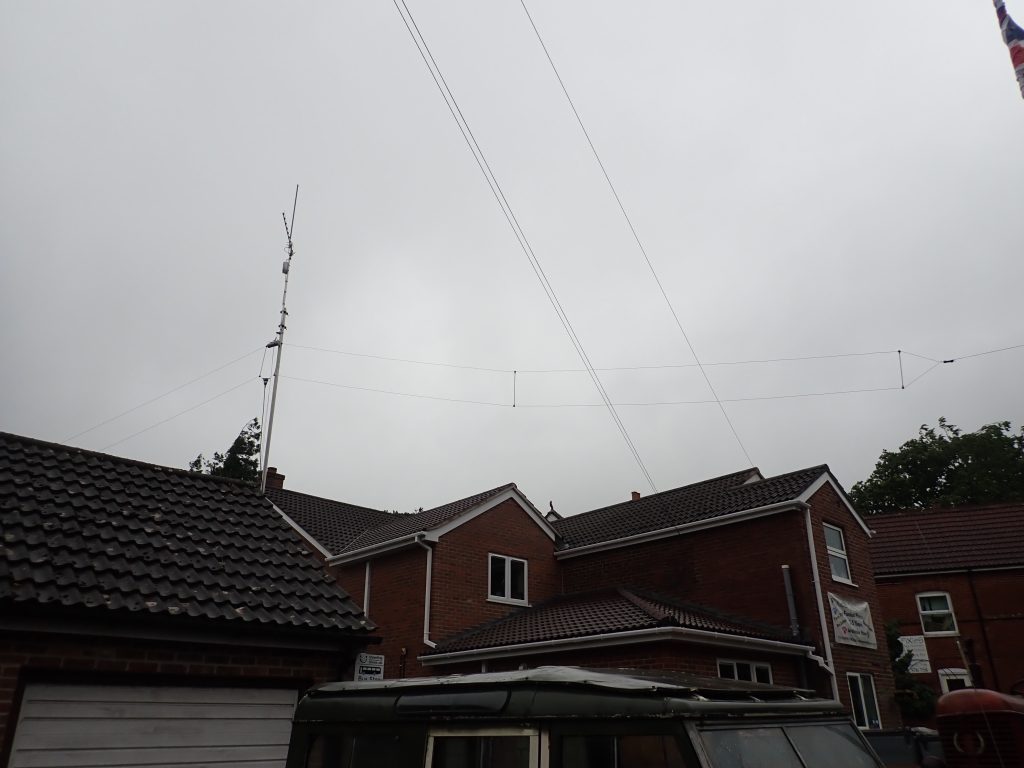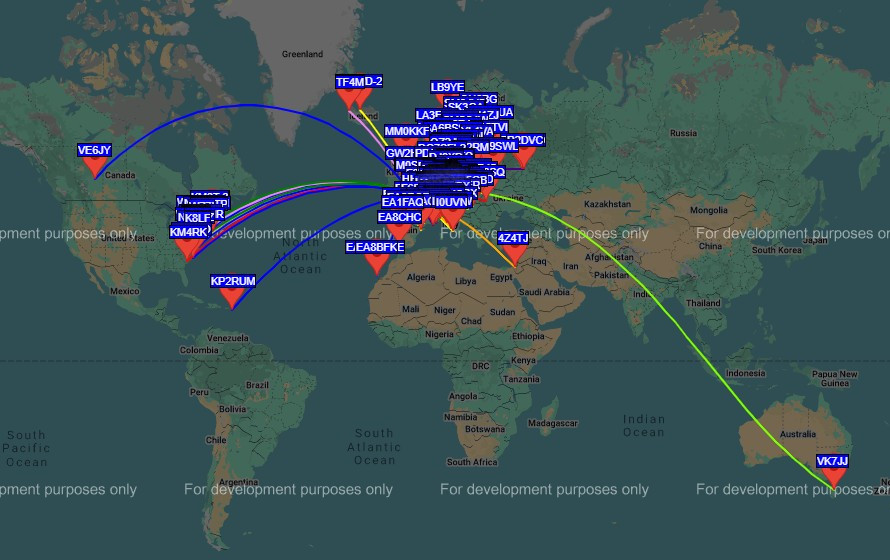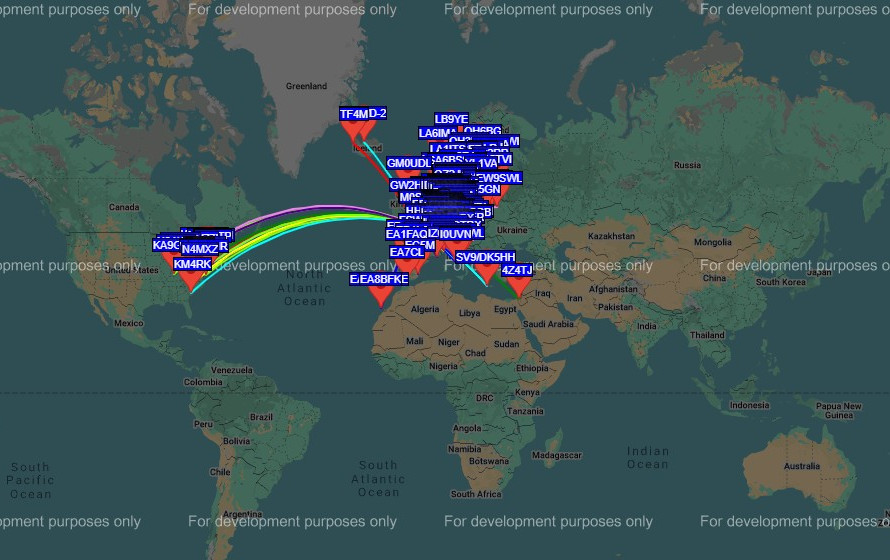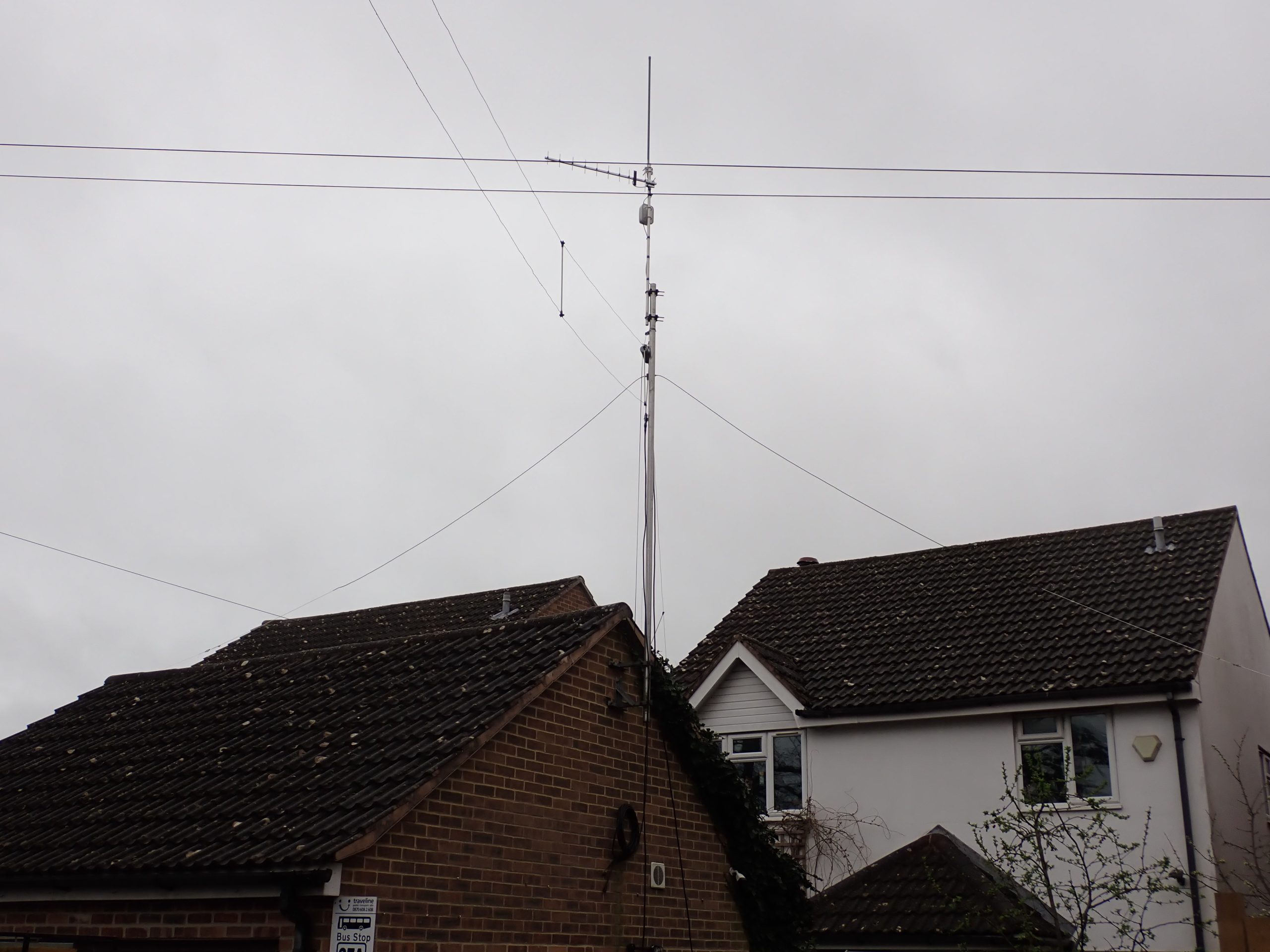I’ve been a bit busy for radio over the last few weeks but I have found time for a few simple experiments. For the past month I have been trying to limit my HF use to QRP (low power) operation using 10w of output power on the 40 and 20m bands in the margins around work etc.
As normal I’m operating into my Tilted Folded Dipole (T2FD). This is supported in the centre on a mast which is around 12m high. One end is connected to my house and the other end to a scaffold pole. Due to the neighbors phone lines which cross my property the ends have to slope down a little to avoid the wires but it’s not particularly tilted – in fact it’s closer to a dipole in configuration. Due to the limited space available on my property the orientation of the antenna makes the broadside (where the maximum gain is) orientation North North-West/South South-East (150/330 degrees).
The T2FD in ‘Dipole’ configuration – just below the phone lines

Ideally from my location in the South of England my antenna would be oriented to give maximum gain to the East and West (into Central Europe). Operating in QRP mode focusing as much power as possible in the correct direction becomes increasingly important which has got me thinking about how to optimise my antenna for best performance.
The experiment:
Although my antenna is slightly droopy the ends are only maybe 2m lower than the centre giving an angle of around 160 degrees in the centre which makes it similar in performance to a dipole. By making the ends more droopy (into an inverted V) I could reduce this angle to around 90 degrees where a droopy dipole becomes much more omni-directional. However to do this the ends of the V become approx 2m off the ground so the trade off is with antenna height. Furthermore the wall of my house is directly to the West of the antenna so the antenna is screened from Central Europe by my house.
With this in mind I decided to test it out – I dropped the ends of the antenna and created the ‘super droopy T2FD’!
Results:
Did it work – well, results are unclear. For the 10 days I had the antenna in the super droopy configuration I was able to make some good QRP QSOs into Europe but not nearly as many as the weeks before. It could be conditions were not as good, or simply the bands were not as busy or the antenna just didn’t perform as well.
I also tested the antenna in both configurations using WSPR 30 minutes apart on the 20m band. Both the tests show a clear North/South alignment of receiving stations which is expected. The inverted V configuration shows a much better performance to the East and West with greater coverage into North America and Australia but the results in Europe are much the same and we must remember that WSPR is very tolerant to poor signal levels where as SSB voice relies on a good positive SNR.
| Inverted V configuration | Dipole configuration |
 |  |
Conclusion:
Well it’s hard to say conclusively. WSPR shows better results with the T2FD in the inverted V configuration but little change in Europe which is where I am targeting. SSB testing suggests that in the inverted V configuration the antenna is too low and the SNR is not good enough for SSB comms. Perhaps there is a half way solution – the ‘not so droopy dipole’. Perhaps if I just drop the ends by a couple of meters I can get a little more omni-directional performance without losing too much antenna height. More experimentation required!
